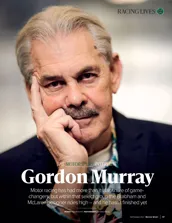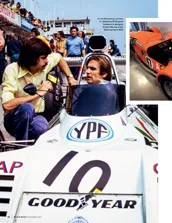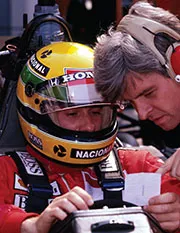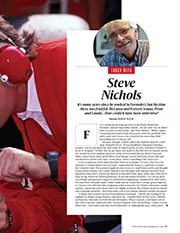Whilst Nichols’s car is based on an older period of McLaren’s history, he still leans heavily on his ‘80s McLaren experience to market his rarefied product.
“Having headed the design team at McLaren during arguably their most successful period ever, I’m a McLaren man through and through,” he says on his website. “With the Nichols N1A I’ve gone back to the very first McLaren for inspiration, combining elements of its classic lines with modern engineering for a car of extraordinary performance and presence.”
Murray’s reputation was already sky-high when he left Brabham at the end of 1986 after producing two drivers’ championship-winning cars, and innovations that included the infamous fan car, as well as the tilted engine of the troublesome BT55.
He joined McLaren to replace John Barnard and was appointed technical director with wide-ranging responsibility for the Formula 1 team, but what that actually meant in terms of involvement is where recollections differ.

John Barnard’s McLaren design team in 1984 – he stands left of centre, with Steve Nichols to the right of him and Jeffreys on the far-left
Matthew Jeffreys
Nichols said that he was tasked with the car that would go on to deliver Ayrton Senna his first championship — said to have been confirmed in a memo that was sent round to senior staff.
“Ron [Dennis] asked me to take on the ’88 car [MP4/4] so that [newly appointed] Neil Oatley could focus on the ’89 [MP4/5] car,” says Nichols.
“Gordon wrote some job descriptions, he didn’t interfere with the designing of the F1 car” Nichols
“Gordon wrote some job descriptions, he didn’t interfere with the designing of the F1 car and backed up the fact that Ron had appointed me as the chief designer.”
Nichols says the relative lack of input from Murray was actually what the McLaren design team desired.
“We’d been under John’s strict rule, and I think we all used this as an opportunity to break out a little bit, to do some of the things that we wanted to do. It was a well-oiled team, we respected each other and we thought in the same way. Things just rolled out in a coordinated sort of way, because there weren’t a lot of ego.”










